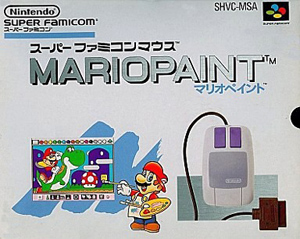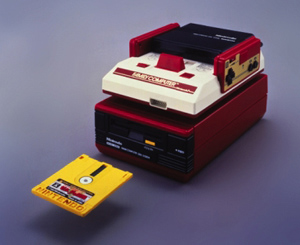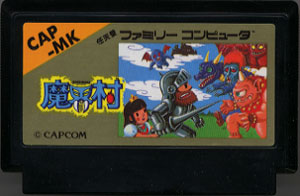Special articles, columns and features exclusive to the MDb.
Famicom Disk System:
The More You Play It, the More You'll Want to Play! [Disk 1]
Introduction | Part 1 | Part 2 | Part 3 | Part 4 | Part 5 | Part 6 | Part 7 | Part 8
WE WERE DRAWING PIXEL ART WITH A FAMICOM CONTROLLERThe Disk System Selection releases on August 10. What influence did you have on its development?Sakamoto: In order of release, Metroid, then Palutena's Mirror (Hereafter referred to by its American name, Kid Icarus), and after that, two episodes of Famicom Tantei Club, totaling four games. That software was released from 1986 to 1989, but since some of our readers weren't even born at that time, in this episode, I think we should exchange stories about the system. This question is sudden, but which of you was there at the beginning of the Disk System?Sakamoto: Osawa's and Kiyotake's generation started game development with the Disk System. Osawa: No, no, didn't Mr. Kiyotake make Duck Hunt (1984)? | |
|
Sakamoto: That's right, Kiyotake was my first-year kouhai, wasn't he? (Laughs) The Famicom software I first released at Research & Development Department 1 (R&D1)* was Balloon Fight (1985). That time I was in charge of Wrecking Crew (1985)... Although both came out for business purposes, Famicom games were said to be "128 of 64". The program used 128 kilobits and images used 64 kilobits, but after Wrecking Crew, it became "256 of 64", with 256 kilobits used in the program, and because of that the game was said to be high storage capacity. And furthermore, the Disk System used roughly 1 megabit, so you could say it really was high storage capacity. *Nintendo's Research & Development Department 1 (R&D1) was responsible for creating many of Nintendo's best-loved franchises, such as Metroid, Kid Icarus, and Wario. The department was established in 1970 and run by Gunpei Yokoi until his departure from Nintendo in 1996. The department has since been disbanded and most of its team members are now working in the Nintendo Software Planning & Development Departments (Nintendo SPD). |
Duck Hunt was also compiled in Made in Wario's micro-games. The original software was played by shooting ducks with a light gun. (From Mario Wiki) |
So I take it the creators in those days became pleased since they had three times the storage capacity of cartridges?**The original text uses the term ‘cassette' instead of cartridge. Sakamoto: The storage capacity also increased, and the flow of what we could do increased, and we freed ourselves from [making] stage-clear games*... Though it wasn't particularly necessary to free ourselves from that form, I think we were looking at the Disk System with images of making games of a large scale. Moreover, the development environment also became very good, and when the Disk System came out, I think many things happened in succession. But as for my experience, it generates images of the most hectic time of my life. However, while I say, "The Disk System had high storage capacity," other companies suddenly came out with a 1 megabit cartridge, and we said, "What the heck are they doing!" (Laughs) *Games like Space Invaders or Pac-Man where the goal is to clear a screen of enemies, objects, or obstacles, and then proceed to the next screen. Osawa: The very first 1 megabit cartridge to come out was Makai Mura (Ghosts 'N Goblins, 1986). Because of that, we said, "This thing came out, but it wasn't on the Disk System!" (Laughs) |

Wrecking Crew. In this action game, Mario breaks down the stage's walls with a hammer. It is being re-released on the Famicom Mini in two parts. |
So immediately following the release of the Disk System, a one-megabit cartridge was released from a third party! (Laughs)Osawa: The Disk System boasted one megabit of storage combining the A and B sides [of a disk], and moreover, since they were magnetic disks, you could also rewrite them, so naturally, you could save whenever you wished. Naturally, you know, the earlier cartridges used a special password to save. Therefore, in those days, there was an image that this very new media was introduced, and after that they said you could make [games] like those that had only been on personal computers. So, it was as if - as far as the developers were concerned - there was an impression that things had been thrown wide open?Osawa: Since the people in this interview are all here with the exception of composer Yamamoto, with regards to the artists, there was a feeling that the breadth [of what they could do] widened immensely after the introduction of the Disk System, since of course it seemed they could draw very many pictures. Because the storage capacity increased, it seems like you could display various animations for characters.Sakamoto: Because of that, since we had to draw lots of pictures, the development environment also became better to match. Well, in my case, though the environment had somehow improved, I wasn't drawing pictures anymore! (Laughs) The [development] environment improved by...?Sakamoto: Regarding the program environment, we didn't understand it well, but as regards the image drawing environment, with the Disk System, we had to draw lots of pictures. In the old days they were really made by hand, using equipment consisting of rows of 16x16 LEDs (luminescent diodes), and we would light this up to match what had been put on graph paper, and draw it by filling the grid up one box at a time, thinking "this is green," "this is brown" (as he says this, he makes gestures of operating a controller). ......?Osawa: This was done with a Famicom controller. Is that how it was?!Osawa: The design tool pad (input device) had been substituted with a Famicom controller! (Laughs) | |
Wow. In those days, mice weren't popular...Sakamoto: In those days, with a digitizer (a pen-shaped input device) and tablet, you didn't use a mouse, though we did after the Super Famicom days. Osawa: Before that, we drew on graph paper and added color... Sakamoto: We used three colors, right! (Laughs) Osawa: Yeah, that's right! (Laughs) And then we would load it on top of CAD. Sakamoto: Or perhaps we should say CAD was the input device. Osawa: A Famicom controller came out for that kind of device, but it was really one controller. It could only draw pictures, and the second controller was a microphone! (Laughs) Because of that, the cursor matched the graph paper, you would sense the color, and naturally you could fill the boxes one at a time. Would you think of it as a primitive version of Mario Paint (1992/SNES)?Sakamoto and Osawa: Very primitive! (Laughs) Osawa: However, though it was done like that in those days, today's games are made differently. Still, it truly was overwhelming work! (Laughs) |

Mario Paint was packaged with a mouse. Was the best part of drawing pixel art with this software that perhaps some people who used it eventually became game designers? (From Videogam.in.) |
Introduction | Part 1 | Part 2 | Part 3 | Part 4 | Part 5 | Part 6 | Part 7 | Part 8












